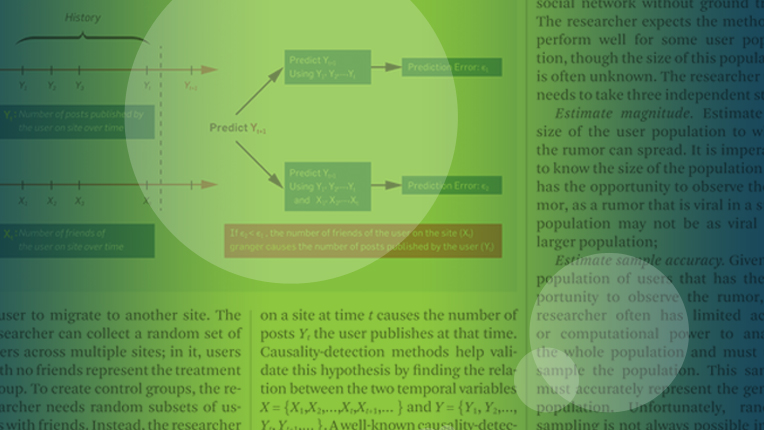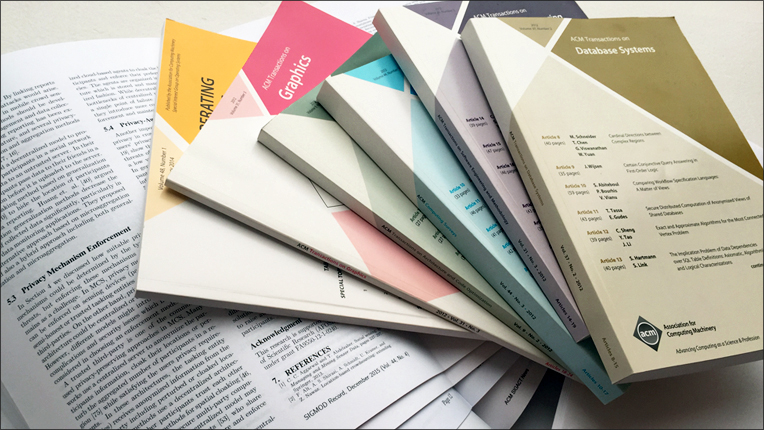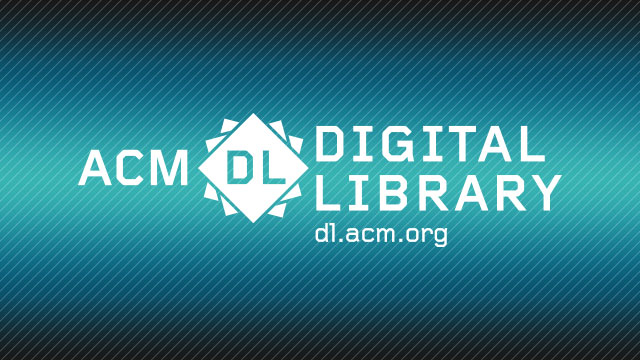ACM Author Profile Page
- Description: The Author Profile Page initially collects all the professional information known about authors from the publications record as known by the ACM bibliographic database, the Guide. Coverage of ACM publications is comprehensive from the 1950's. Coverage of other publishers generally starts in the mid 1980's. The Author Profile Page supplies a quick snapshot of an author's contribution to the field and some rudimentary measures of influence upon it. Over time, the contents of the Author Profile page may expand at the direction of the community.
Please see the following 2007 Turing Award winners' profiles as examples:
Edmund M Clarke
E Allen Emerson
Joseph Sifakis
- History: Disambiguation of author names is of course required for precise identification of all the works, and only those works, by a unique individual. Of equal importance to ACM, author name normalization is also one critical prerequisite to building accurate citation and download statistics. For the past several years, ACM has worked to normalize author names, expand reference capture, and gather detailed usage statistics, all intended to provide the community with a robust set of publication metrics. The Author Profile Pages reveal the first result of these efforts.
- Normalization: ACM uses normalization algorithms to weigh several types of evidence for merging and splitting names. These include:
- co-authors: if we have two names and cannot disambiguate them based on name alone, then we see if they have a co-author in common. If so, this weighs towards the two names being the same person.
- affiliations: names in common with same affiliation weighs toward the two names being the same person.
- publication title: names in common whose works are published in same journal weighs toward the two names being the same person.
- keywords: names in common whose works address the same subject matter as determined from title and keywords, weigh toward being the same person.
Automatic normalization of author names is not exact. Hence it is clear that manual intervention based on human knowledge is required to perfect algorithmic results. ACM is meeting this challenge, continuing to work to improve the automated merges by tweaking the weighting of the evidence in light of experience.
- Bibliometrics: In 1926, Alfred Lotka formulated his power law (known as Lotka's Law) describing the frequency of publication by authors in a given field. According to this bibliometric law of scientific productivity, only a very small percentage (~6%) of authors in a field will produce more than 10 articles while the majority (perhaps 60%) will have but a single article published. With ACM's first cut at author name normalization in place, the distribution of our authors with 1, 2, 3..n publications does not match Lotka's Law precisely, but neither is the distribution curve far off. For a definition of ACM's first set of publication statistics, see Bibliometrics.
- Future Direction: The initial release of the Author Edit Screen is open to anyone in the community with an ACM account, but it is limited to personal information. An author's photograph, a Home Page URL, and an email may be added, deleted or edited. Changes are reviewed before they are made available on the live site.
ACM will expand this edit facility to accommodate more types of data and facilitate ease of community participation with appropriate safeguards. In particular, authors or members of the community will be able to indicate works in their profile that do not belong there and merge others that do belong but are currently missing.
A direct search interface for Author Profiles will be built.
An institutional view of works emerging from their faculty and researchers will be provided along with a relevant set of metrics.
It is possible, too, that the Author Profile page may evolve to allow interested authors to upload unpublished professional materials to an area available for search and free educational use, but distinct from the ACM Digital Library proper. It is hard to predict what shape such an area for user-generated content may take, but it carries interesting potential for input from the community.
- ACM AUTHOR-IZER Service: ACM Author-Izer is a unique service that enables ACM authors to generate and post links on either their home page or institutional repository for visitors to download the definitive version of their articles from the ACM Digital Library at no charge.
Downloads from these sites are captured in official ACM statistics, improving the accuracy of usage and impact measurements. Consistently linking to definitive version of ACM articles should reduce user confusion over article versioning.
ACM Author-Izer also extends ACM’s reputation as an innovative "Green Path" publisher, making ACM one of the first publishers of scholarly works to offer this model to its authors.
Please visit the ACM Author-Izer web page on how to activate this service.
- FAQs:
Q. How do I find my Author Profile page and take ownership?
A. You will need to take the following steps:
- Log in to your existing ACM Web Account. If you have forgotten your password, you can request a reminder. If you do not have one, you can create a free account. But please note it is preferable for you to use your existing account and we can update the contact information if you would like.
- Sign-In to the ACM Digital Library
- Find your Author Profile Page by searching the ACM Digital Library for your name
- Find the result you authored (where your author name is a clickable link)
- Click on your name to go to the Author Profile Page
- Click the "Claim this Profile" link on the Author Profile Page
- Wait for ACM review and approval; generally less than 24 hours
- Contact [email protected] with any questions (for example, if you have multiple profiles that need merging)
Q. Why does my photo not appear?
A. Make sure that the image you submit is in .jpg or .gif format and that the file name does not contain special characters.Q. What if I cannot find the "Claim this Profile" function on my author page?
A. The ACM account linked to your profile page is different than the one you are logged into. Please logout and login to the account associated with your Author Profile Page.Q. Why can't I find my most recent publication in my ACM Author Profile Page?
A. There is a time delay between publication and the process which associates that publication with an Author Profile Page. Right now, that process usually takes 4-8 weeks.
Publish with ACM
ACM's prestigious conferences and journals seek top-quality papers in all areas of computing and IT. It is now easier than ever to find the most appropriate venue for your research and publish with ACM.

Select Application-Oriented Papers
Many papers published in ACM's Journals hold great value to software engineers interested in staying at the top of their field. The papers in this collection were selected for their relevance to practitioners who strive to build the software that will shape the future.

New ACM Journals Accepting Submissions
Proceedings of the ACM on Software Engineering (PACMSE): Submission guidelines here
Proceedings of the ACM on Management of Data (PACMMOD): Submission guidelines here
ACM Transactions on Probabilistic Machine Learning (TOPML): Submit papers here
Proceedings of the ACM on Networking (PACMNET): Submission guidelines here
Games: Research and Practice (GAMES): Submit papers here
Collective Intelligence (COLA): Submit papers here
Journal of Computer and System Sciences (JCSS): Submit papers here
ACM Journal on Autonomous Transportation Systems (JATS): Submit papers here
ACM Journal on Responsible Computing (JRC): Submit papers here
ACM Transactions on Recommender Systems (TORS): Submit papers here
Distributed Ledger Technologies: Research and Practice (DLT): Submit papers here
ACM Transactions on Evolutionary Learning (TELO): Submit papers here
ACM Digital Government: Research and Practice (DGOV): Submit papers here
Bringing You the World’s Computing Literature
The most comprehensive collection of full-text articles and bibliographic records covering computing and information technology includes the complete collection of ACM's publications.

New Options for ACM Authors to Manage Rights and Permissions
Changes expand access to Special Interest Group conference proceedings. ACM offers flexible options that fit computing researchers' individual needs.